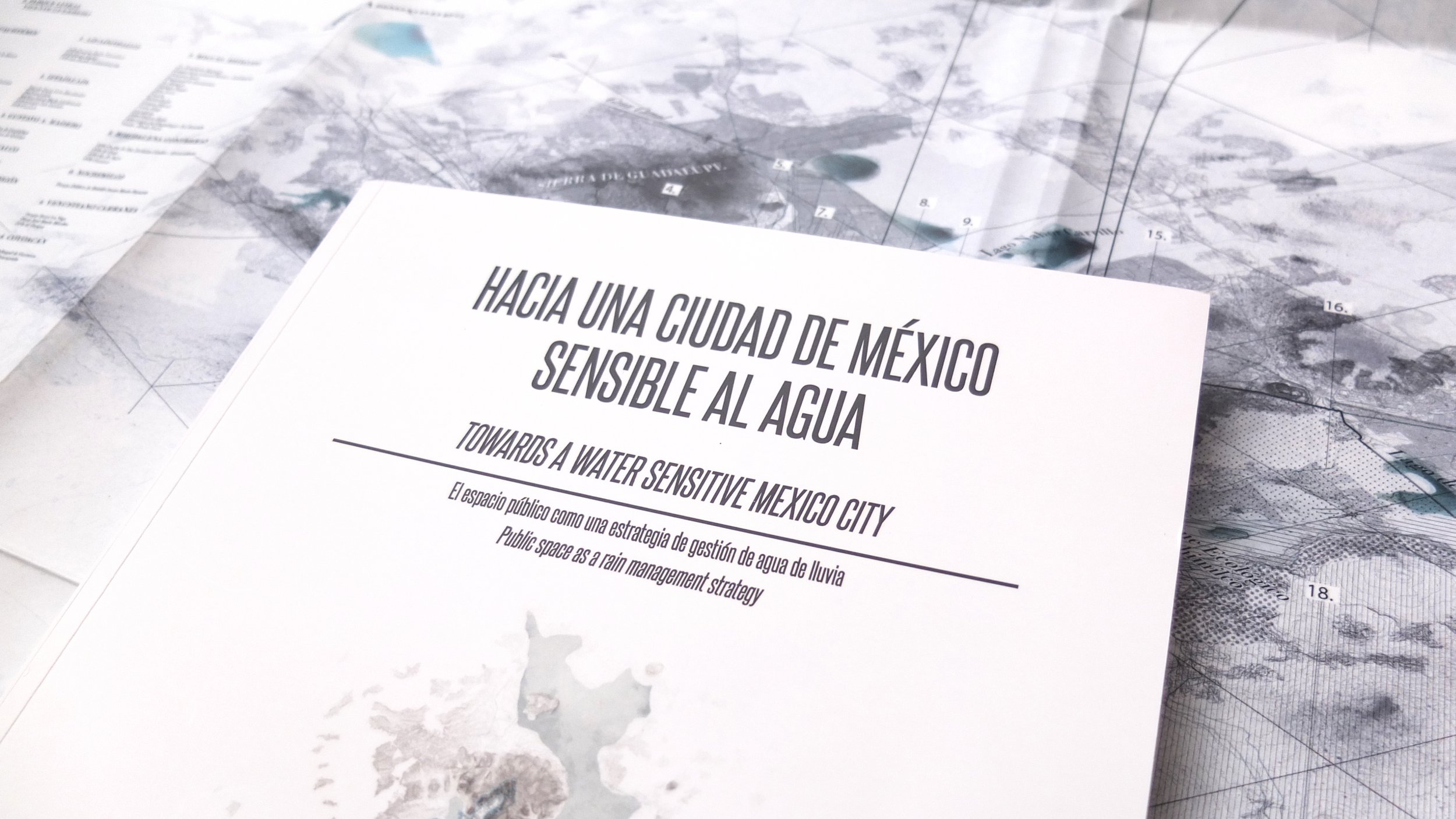
Towards a water sensitive Mexico City
Location | City of Mexico, Mexico
Year | 2016
Client | Autoridad del Espacio Público (AEP)
Collaboration | AEP, Deltares , 100 Resilient Cities Office CDMX, UNAM
Status | Municipal strategy document
Financing | Latin American Development Bank (CAF), Embassy of the Kingdom of the Netherlands
Report
The Public Space Authority of Mexico City (Autoridad del EspacioPúblico; AEP) recognizes cyclical flooding and water shortages as some of the most pressing urban vulnerabilities in Mexico City (CDMX). The city faces a water paradox of simultaneous abundance and scarcity. AEP defines an ambition of combining quality public space, problem solving water management strategies and creating socially sustainable places in the urban public realm.
The history of the region of CDMX provides the necessary context to understand its current situation and the problems it faces. Originally, the area where CDMX is settled, was a large system of lakes. In fact, the historical city of Tenochtitlan, capital of the Aztec empire, was established on an small island in the lakes of the valley. Since the arrival of the Spanish conquerors, the draining of the lake has been consequently continued until today, reducing the surface of the lake dramatically and confining it to small sheets of water sprinkled through the valley of Mexico City.
To understand the water paradox the city is facing, a comprehensive analysis of the physical situation of CDMX was mapped to explain the challenge to be tackled in a water sensitive city. The analysis covers the general variables such as topography, geology and climate conditions, as well as the variables of the hydrological cycle that pose a risk to the population due to the irreversible changes that they are causing. All the aforementioned variables are interconnected in one way or another, all layers should be understood as parts of a whole cycle.
To understand the water paradox the city is facing, a comprehensive analysis of the physical situation of CDMX was mapped to explain the challenge to be tackled in a water sensitive city. The analysis covers the general variables such as topography, geology and climate conditions, as well as the variables of the hydrological cycle that pose a risk to the population due to the irreversible changes that they are causing. All the aforementioned variables are interconnected in one way or another, all layers should be understood as parts of a whole cycle.
The solutions we offer can be understood as contributions to healing the disturbed water cycle of CDMX. A water sensitive public space strategy includes offering measures that solve local problems and at the same time make an effective contribution to restoring the water balance for the entire city. Therefore, zoning the public domain of Mexico City is deployed as an overall water management strategy by the motto: ‘Delay, retain, store and reuse, drain only when necessary’. This includes a definition of the ambitions resulting in a ‘Water sensitive zoning map’ subdividing the entire territory of the Federal District of Mexico City.
Related to the motto, a catalogue of possible public space measures are defined. This ‘toolbox’ is connected to the Water sensitive zoning map, explaining the actions to adapt public space to water management strategy. These applicable measures range from generic large scale statements like seasonal storage facilities to a series of more site specific interventions like the construction of raingardens or watersquares.
One of the objectives agreed during the workshop, was the priority of develop further the areas of the Eastern Central city and the original Eastern Basin, specially the district of Iztapalapa. The measures of the catalogue are translated and connected into conceptual typologies on site, by designing prototypical sections for each of the public space typologies. This exemplary section designs meant to illustrate a fruitful combination between smart water management and quality public space fit for active urban use. This first stage ended with the publication of the book, ‘Towards a Water Sensitive Mexico city’.















